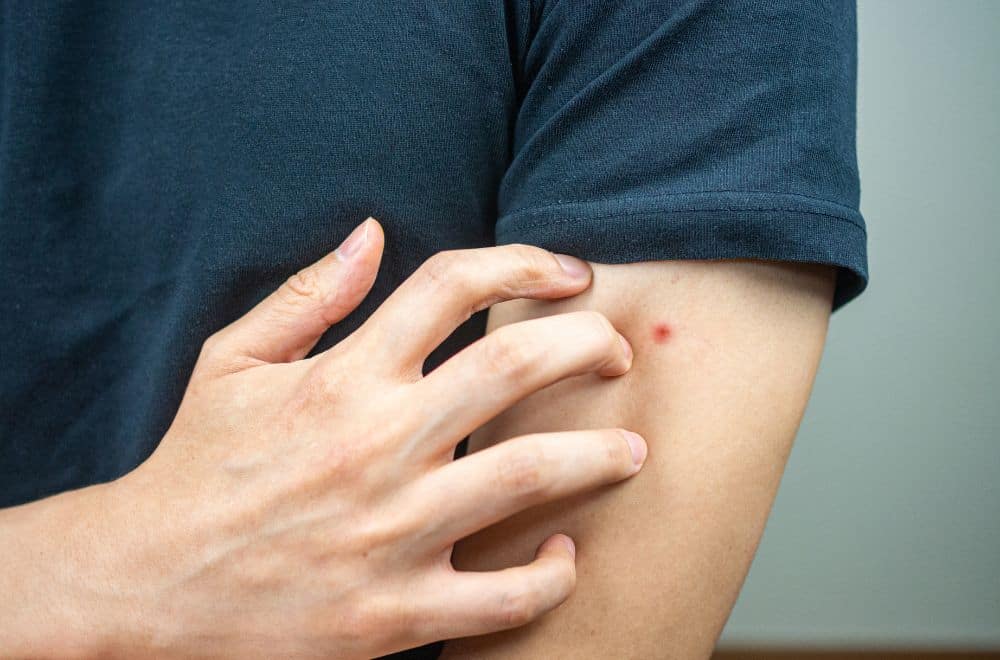Most bug bites are randomly distributed red itchy lumps, but a few species choose only specific body parts and bite in clusters or a pattern line. That way, you need to deal with a sizable painful and swollen area that can help you differentiate the type of bugs that bite in clusters.
Be careful when experiencing such a thing since some of these creatures cause atypical reactions, like swelling or short breath, besides typical bite marks. In this case, it is recommended to seek medical help.
Bugs that bite in clusters |
||
| Bug type | Size | Color |
| Fleas | 0.08 to 0.16 inches (2 – 4 mm) | Red-brown |
| Bed bugs | 0.16 to 0.27 inches (4 – 7 mm) | Brown |
| Chiggers | 0.04 to 0.08 inches (1 – 2 mm) | Bright red or red-brown |
| Rat mites | 0.03 to 0.06 inches (0.8 – 1.5 mm) | Cream to red, brown, or black |
| Bird mites | 0.04 inches (1 mm) | Semi-transparent |
| Fire ants | 0.08 to 0.24 inches (2 – 6 mm) | Reddish-brown |
| Head lice | 0.10 to 0.12 inches (2.5 – 3 mm) | White or brown |
Reasons for Bugs to Bite in Clusters
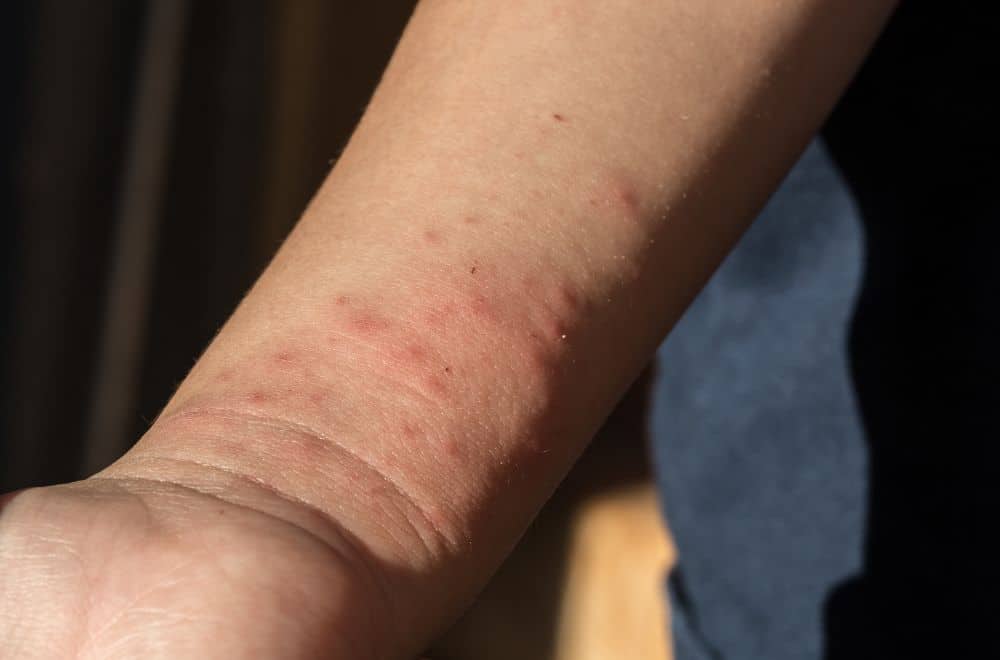
These bugs bite in clusters, typically in line or following a unique pattern. You can recognize a few reasons, including the possibility that these bites result from biting multiple bugs, not only one.
Your odor, sweat, and exhaled carbon dioxide attract them, making your proximity a food source. In fact, most live in your bed and bite you to suck blood or consume the waste product of your body.
The other reason for clustered bites is lymph nodes and quick access to blood. Remember that blood-sucking insects can’t eat enough at once, but they try several times. So, they will bite you in different places, leaving marks that create specific patterns.
Bugs That Bite In Clusters
There is a list of seven bugs that bite humans and animals and leave bumps in clusters on their host skin.
Bugs that bite in clusters |
||
| Bugs | Bite appearance | Symptoms |
| Fleas | Multiple bites on the lower body parts that leave tiny red bumps in a row | Itching and redness on the bite site |
| Bed bugs | Red flat or raised bumps spreading out in a line | Redness, itching, and swelling |
| Chiggers and bird mites | Bites in clusters leave a pimple-like rash, often surrounded by raised lines | Redness, swelling, and tingling, followed by intense itching, particularly at night |
| Rat mites | Red and itchy bumps raised above the skin surface | Painful and irritated skin followed by itching |
| Fire ants | Multiple bites in clusters or a line that cause red lumps | Burning sensation, swelling, and itchiness |
| Head lice | Tiny red bumps placed in a row on the head and neck | Intense itching appears two to four weeks after biting and worsens at night |
1. Fleas
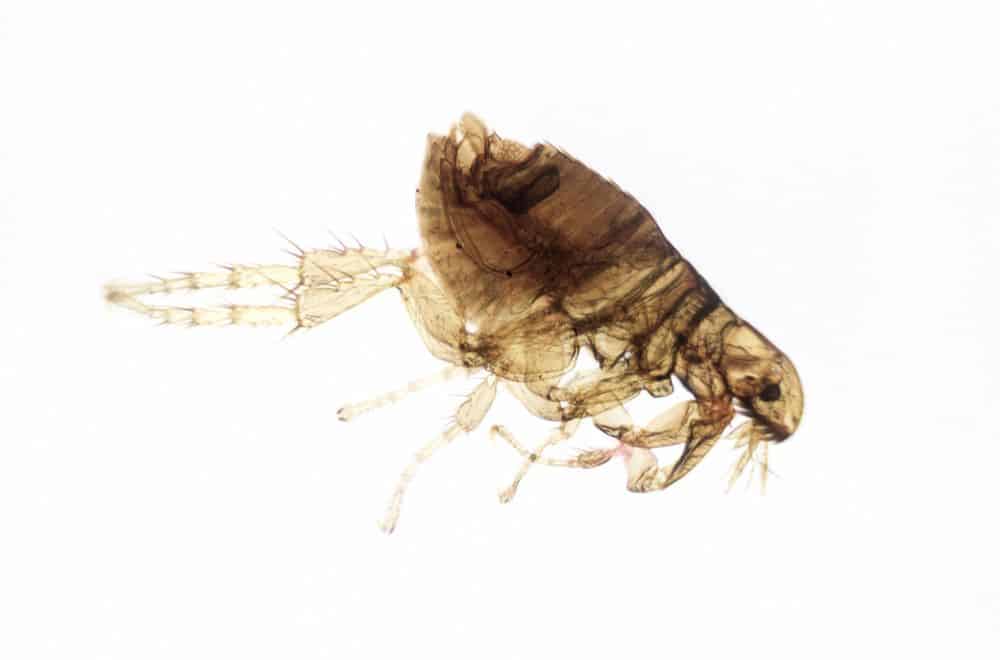
Fleas are red-brown bugs with a length ranging from 0.08 to 0.16 inches (2 – 4 mm). The carbon dioxide that humans and animals emit attracts these external parasites. They attack primarily lower body parts, resulting in multiple tiny red, itchy bumps appearing in a row.
They have a mouthpart with three needles but use only those from the right and left sides to bite you. The third one penetrates a previously located blood vessel underneath the skin, and fleas use it to suck its host blood.
The problem appears when fleas fail to find the blood vessel on the first bite, so they keep biting the host while looking for one. As a result, they create clusters or lines within a few square inches.
When infestation is high, you may suffer from multiple clusters occurring on the skin surface. In most cases, they affect lower body parts, including shins, ankles, and feet.
Thanks to an anticoagulant released from salivary glands, fleas can prevent the blood from clotting. That way, the host blood undisturbedly flows to their bodies. Unfortunately, this anticoagulant causes changes in the skin, like:
- Skin rash or hives
- Red lumps and swelling
- Intense itching
The first symptoms occur a few hours after the bite. It is necessary to avoid scratching your skin, or you can end up with a skin infection otherwise. Remember that 17 people got a plague in the US within the past ten years, thanks to infected fleas transmitting this horrible disease from wild rodents to people.
The worst thing is that your bed is the primary place for fleas to settle and attack you, often during the night. Typically, your pets bring these creatures into your home, but you can also do it after walking through tall grass.
You can eliminate these small jumping holometabolous insects by using glue traps. Besides, you should buy a flea collar for your pet and wear white socks while hiking.
2. Bed bugs
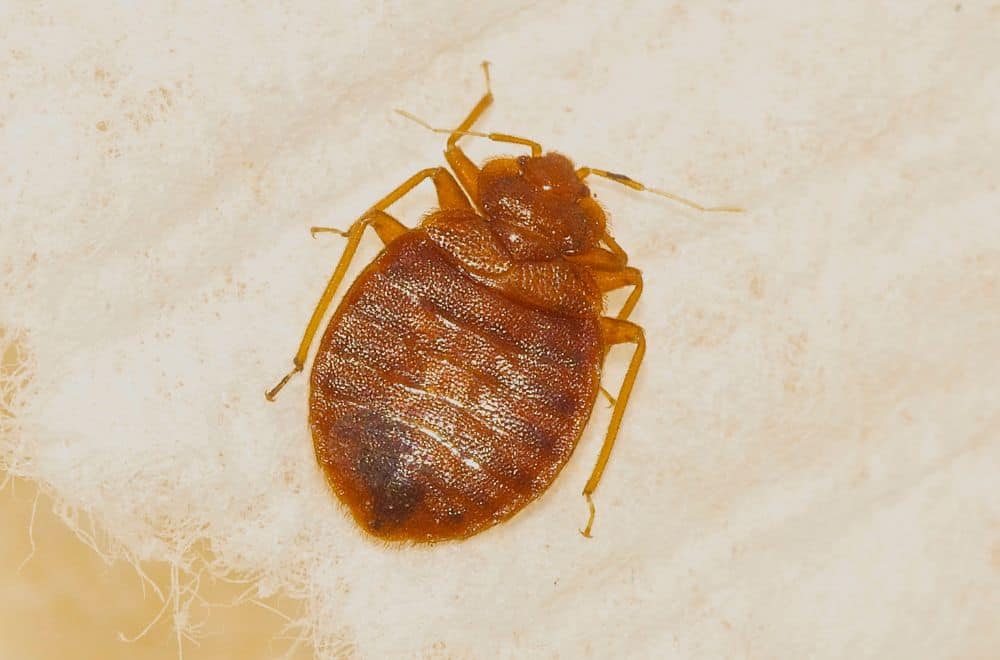
Bed bugs are tiny, 0.16 to 0.27 inches (4 – 7 mm) long brown, flat, wingless insects. They are the most common cause of clustered bites in humans in the US.
They suck human blood through mouthparts after a beak (proboscis) pierces the skin. Specific pumps simultaneously suck blood and inject saliva into the host bloodstream within 3 to 10 minutes, causing flat or raised red bumps arranged in a zig-zag line.
Symptoms appear within several days, including skin redness, heavy itching, and unpleasant swelling. Unfortunately, each bug can bite at least twice to trice during the night, so you will quickly end up with clusters of red bumps anywhere on your body.
Unlike adults that bite once a week, nymphs need blood daily. So, they will leave bumps on your skin or cause an allergy in the worst scenario until you exterminate them.
In most cases, you will bring them to your home from a hotel and your friends’ houses or cars. Even though you can quickly infest your home, exterminating them can be a complicated issue only professionals can solve.
3. Chiggers
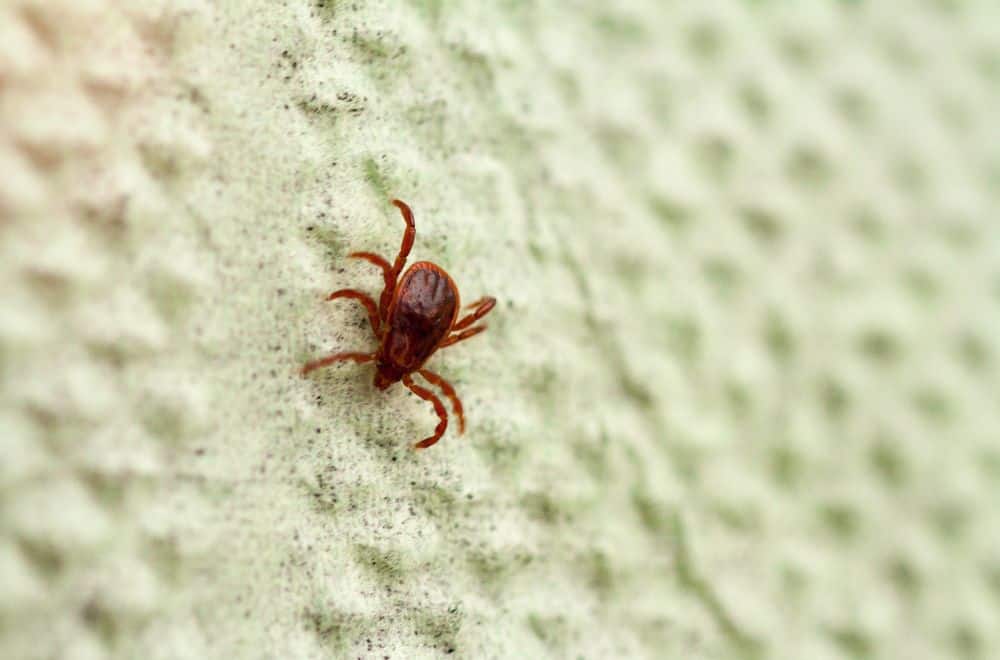
Chiggers are bright red or red-brown arachnids that typically reach 0.04 to 0.08 inches (1 – 2 mm) in length. They feed on dead skin cells and leave clusters after biting, resulting in specific symptoms, including:
- Pimple-like rash and blisters surrounded by raised lines
- Redness, irritation, and swelling
- Tingling followed by intense itching at night
Unlike Bed bugs that bite exposed skin, Chiggers cause clusters in the skin under tight clothes. The most common places are the neck, waist, groin, and ankles. After feeding, they drop off your skin to molt and keep growing. Fortunately, their bites don’t spread diseases.
After spending time outdoors and strolling through thick, long grass, you can bring these menaces into the house. Unlike Fleas, Chiggers never attach to pet fur. It is possible to prevent their infestation by applying insect repellent and wearing long-sleeved shirts.
4. Rat mites
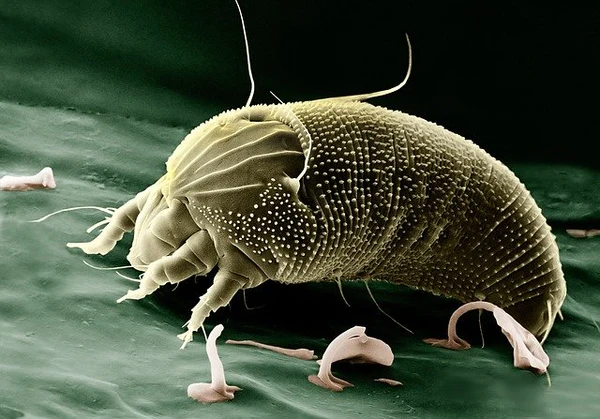
Image Credit: automatictrap
Rat mites are cream to red, brown, or black, 0.03 to 0.06 inches (0.8 – 1.5 mm) long parasitic insects. Their standard hosts are rats, but they can also bite humans alternatively. After biting you at a chosen body part, these blood-suckers will cause:
- Skin irritation
- Red and itchy bumps raised above the skin’s surface
- Swelling in the bitten area, resulting from intense scratching
- Dermatitis
Infestation with these pests is pretty unlikely unless you have a rat infestation. Once mites come inside your home, you will end up with painful skin full of itchy clusters and possible infection. As soon as you eliminate rats, it will be possible to clean your home of mites.
5. Bird mites
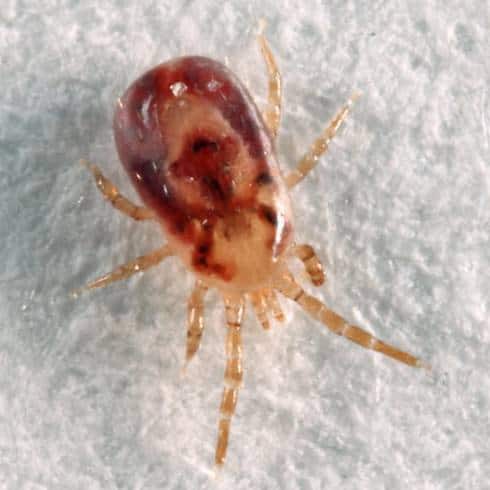
Image Credit: suburbanexterminating
Bird (chicken) mites are semi-transparent, 0.04 inches (1 mm) long pest insects living on bird bodies. Once they enter houses, they become nuisances for people and start sucking their blood.
Their bites arranged in clusters anywhere on your body cause:
- Pimple-like rash
- Skin redness, often surrounded by raised lines
Once you pick them up, you will spend sleepless nights with intense skin itching and tingling. The only way to get rid of them is to eliminate bird nests placed near the house and thoroughly clean and disinfect your home.
6. Fire ants
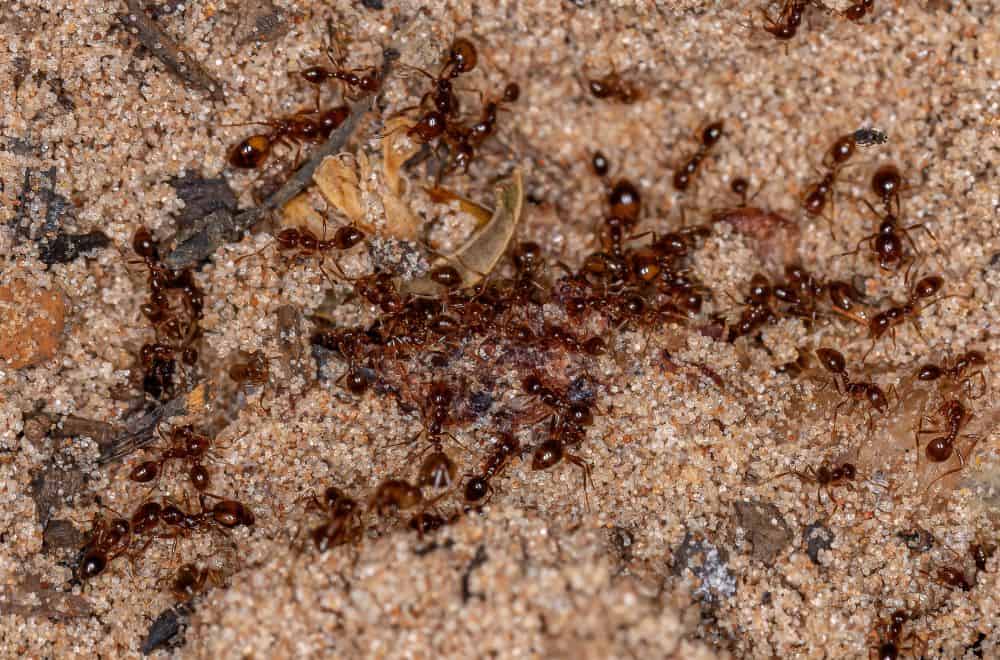
Reddish-brown Fire ants are 0.08 to 0.24 inches (2 – 6 mm) long invasive pest insects native to South America. Nowadays, they are common in the US, particularly in the southern States, where inflicting multiple and highly painful bites in clusters or a line on humans and animals.
Remember that Red fire ants are the most aggressive ant species and never forgive disturbance and an attempt to destroy their nest. They attack in a group and use strong mandibles to attach to the skin.
After biting multiple times at random body parts, these insects inject solenopsin, a potent toxin, into the human skin, causing intense pain and burning.
The result is red lumps and red-hive-like lesions at the bitten place that appear in clusters several hours after biting. They are followed by a burning sensation, skin swelling, and almost unbearable itching.
After a day or two, these lumps develop into blisters that pass in 3 to 7 days, leaving scars on the skin. Be careful and never scratch them to prevent severe infections.
7. Head lice
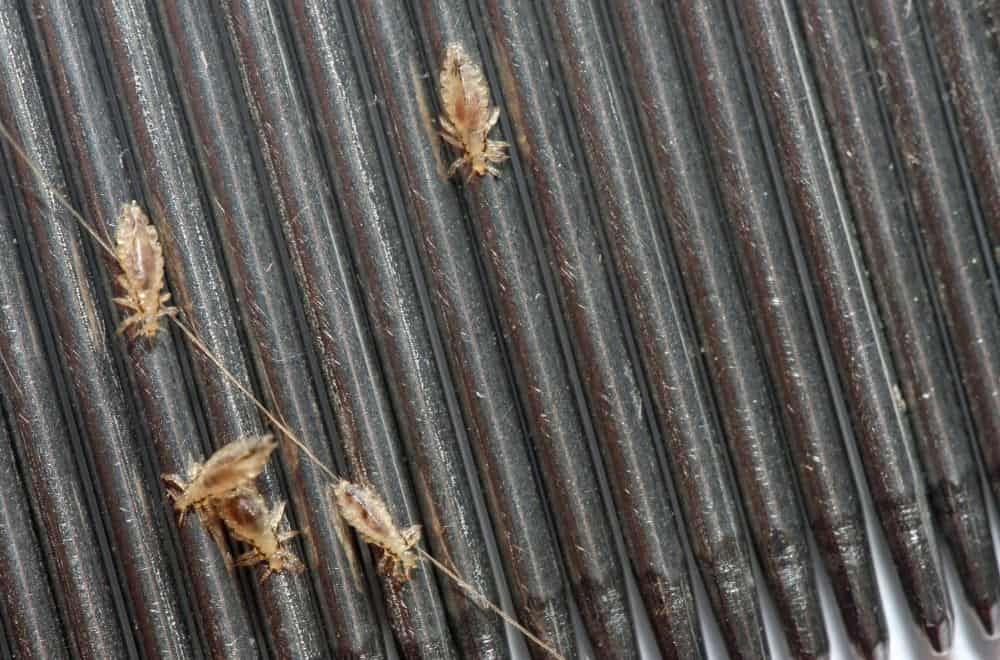
White or brown Head lice are 0.10 to 0.12 inches (2.5 – 3 mm) long parasitic insects that feed on human blood a few times a day without spreading diseases. You can find them on the head and neck, particularly around eyelashes and eyebrows.
Their bites cause tiny red bumps placed in clusters or rows, followed by redness, swelling, and intense itching. The first symptoms typically appear two to four weeks after biting and worsen at night.
It is crucial to avoid scratching affected areas to prevent sores and possible skin infections. Unfortunately, that is easier said than done because the itching can be unbearable.
Kids usually get Head lice while playing and sharing brushes, combs, hairpins, clothing, and hats. Catching them from a pillow, couch, or bed is also possible.
Once they settle down into your hair, you will quickly notice sesame seed-shaped adults and their tiny white eggs. Since exterminating them is incredibly difficult, the best option is to ask a doctor for help.
Bugs That Never Bite In Clusters
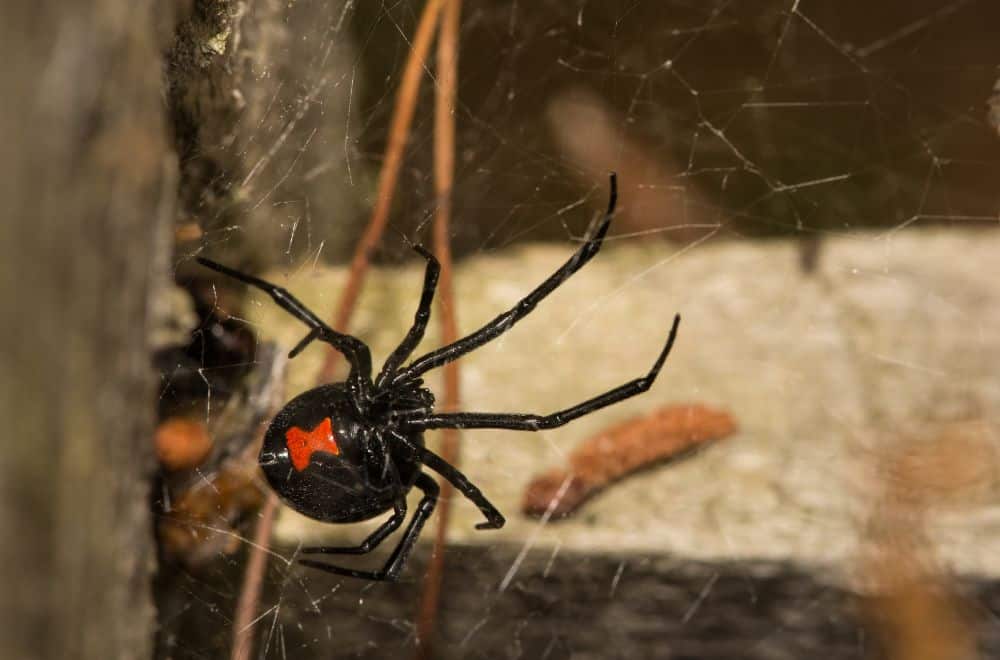
You can find much misinformation about bugs that bite in clusters on the Net. There is a list of these that never leave group bite marks but only single, random ones:
Ticks, including black-legged ticks spreading Lyme disease – These arachnids bite and attach to one place, never in clusters.
Black widow spiders – This species is common in the US and never bites in clusters. In fact, these arachnids rarely bite humans unless they feel threatened. Their bite looks like two red dots without a rash on the skin. Unfortunately, they can be dangerous because of a released toxin attacking the human nervous system.
Brown recluse spiders – You can often find these arachnids in the US, but they are unlikely to bite humans. Once these spiders bite someone, you can see symptoms similar to those caused by Black widow bites. Even though the bite is painless, you can recognize a bluish-black spot surrounded by a red rash halo that quickly turns to necrosis.
Mosquitos – These insects always bite randomly without any pattern. Bitten places, looking like red lumps that itch, are distant from each other.
Scabies mites – These bugs cause terrible skin infections after biting humans or animals without recognizable patterns. Since they lay eggs inside the skin, you can expect complications.
Treatment and Prevention
Bugs biting in clusters cause unpleasant, itchy, and often painful skin changes. Therefore, you should eliminate them from your home and prevent them from returning.
Treatment
Wash the bitten spot and apply adequate hydrocortisone cream or calamine lotion to relieve pain. Additionally, ask for medical attention immediately when bites cause an allergic reaction, followed by:
- Difficulty breathing
- Nausea and vomiting
- Headache
- Muscle pain
- Fatigue
Prevention
You can find a few excellent repellents to keep these bugs away from your skin. Choose a bug spray containing DEET, but avoid expired products since they are less effective.
Clean your home regularly and use essential oils to make it fresh and protected. Additionally, wear long-sleeved clothing when walking through tall grass, hiking, and camping.
Summary
Coming across bugs that bite in clusters is an unpleasant and often painful experience. The only way to protect yourself is to clean your home and apply preventive measures regularly. Once you are bitten, treat sore and itchy spots appropriately or ask for medical help when necessary.
